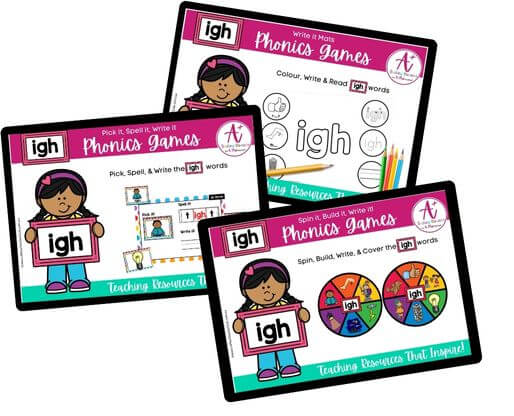Vowel Teams Activities
Phonics, Spelling, & Grammar Resources
Hey there, fellow primary school teachers! Today, we’re diving into the world of vowel teams activities and how to teach them effectively. Whether you’re a seasoned pro or a newbie in the education game, this blog post is your go-to resource for mastering vowel teams in your classroom.
What Are Vowel Teams and Vowel Digraphs?
Vowel teams, simply put, are pairs or groups of two or more vowels that work together to create a specific sound within a word. These dynamic duos and trios are like the Batman and Robin of phonics, joining forces to produce unique vowel sounds. Some common examples include “ea” in “team” and “ie” in “pie.”
As primary school teachers, it’s essential to be well-versed in the various terms and patterns related to vowel teams. Including these alternative names and patterns in your teaching toolkit can be helpful, especially when discussing vowel teams in the context of phonics and word recognition. Students might encounter these terms as they progress through their education, so being prepared to clarify and explain the differences is crucial. So, here’s a bit more about the other names and patterns you might come across:
1. Diphthongs: Vowel teams are sometimes referred to as diphthongs. Diphthongs are combinations of two vowel sounds within the same syllable, creating a unique sound. For example, “oi” in “coin” and “ou” in “cloud” are both diphthongs. Diphthongs involve two vowels working together to create a sliding sound, contrasting them with vowel digraphs, which produce a single vowel sound. Teaching diphthongs alongside vowel teams can help students understand the concept of vowel combinations.
2. Digraphs: While not exactly the same as vowel teams, digraphs are a related concept. Digraphs are pairs of letters that represent a single sound. Common vowel digraphs include “ai,” “ei,” “oa,” and “ee.” Digraphs are pairs of letters that represent a single vowel sound. These are worth mentioning because they can often be confused with vowel teams, and understanding the distinction is essential.
3. Vowel Combinations: Another term that’s used interchangeably with vowel teams is “vowel combinations.” This emphasizes the idea that vowels can come together in various combinations to create specific sounds, like the “ea” in “beach” or “ie” in “pie.”
4. Vowel Pairs: Vowel pairs is a straightforward way to describe vowel teams that consist of two vowels, such as “ai,” “ea,” or “oo.” This term highlights the pairing of vowels to create unique sounds.
5. Long Vowels: In some cases, teachers might simply refer to vowel teams as “long vowels” because many vowel teams produce long vowel sounds. For instance, “ai” in “rain” represents a long “a” sound, and “ee” in “tree” represents a long “e” sound.
6. Vowel Blends: While less common, you may also come across the term “vowel blends.” It’s used to describe combinations of vowels that blend together to form specific sounds, similar to the idea of blends with consonants, like “br” in “brick.”
Why Do We Teach Vowel Teams?
Vowel teams are essential for young readers and spellers. They play a crucial role in helping students decipher the pronunciation of words and understand their meanings. By mastering these teams, students can expand their vocabulary and become more confident in both reading and writing. Understanding spelling rules, including those related to vowel teams, can help students become more confident in both reading and writing.
Moreover, vowel teams are the keys to unlocking the door to fluency and comprehension. Once your students get the hang of these vowel team power pairs, they can breeze through more complex words and text with ease.
Common Problems Students Face with Common Vowel Sounds
Now, let’s talk about the stumbling blocks our little learners might encounter when grappling with vowel teams. It’s important to be aware of these issues so that we can tackle them head-on.
- Confusion with Vowel Sounds: Sometimes, students might get overwhelmed by the various sounds produced by vowel teams. For example, “ea” can sound like “ee” in “beach” or “eh” in “bread.” Vowel teams often produce one long vowel sound, which can sometimes confuse students when the same team produces different sounds in different words. The key here is to break it down and practice these sounds individually.
- Spelling Challenges: It’s not uncommon for kids to mix up similar-sounding vowel teams, like “ei” and “ie.” Encourage them to look for patterns and practice spelling words with these teams consistently.
- Reading Fluency: Vowel teams can throw a wrench into reading fluency, as students may slow down to decode these complex combinations. Reading aloud, using flashcards, and practising with real words can help increase their reading speed.
Vowel Teams Word Lists
Here are some examples of Vowel Team Words used in our resources:
How to Teach Vowel Teams
So, how do you make teaching vowel teams fun and engaging? Here are some strategies to consider:
- Use Visual Aids: Visual aids like posters, flashcards, and interactive online resources can make vowel teams more accessible to young learners. Create colourful posters with examples of vowel teams and their corresponding words.
- Word Sorts: Have students participate in word sorts to categorize words with specific vowel teams. This hands-on activity helps them recognize patterns and differences in spelling.
- Games and Activities: Engage your students with games and activities that involve vowel teams. Bingo, Scrabble, or even online games that focus on vowel teams can add an element of fun to the learning process.
- Read Aloud: Reading books and stories that prominently feature words with vowel teams can reinforce learning. Encourage your students to read these texts and identify vowel teams in context.
- Practice, Practice, Practice: Repetition is the mother of skill. Provide your students with ample opportunities to practice reading and spelling words with vowel teams until they become second nature.
Understanding Vowel Sounds
Understanding vowel sounds is crucial for reading and spelling. Vowel sounds are the sounds made by the letters A, E, I, O, and U, and sometimes Y. These sounds can be short or long, and they can be made by a single vowel letter or a combination of vowel letters, known as vowel teams. Vowel teams are two or more letters that work together to make one vowel sound. For example, the letters “ai” in the word “rain” make a long vowel sound.
When teaching vowel sounds, it’s important to highlight the difference between short and long vowel sounds. Short vowel sounds, like the “a” in “cat” or the “e” in “bed,” are typically found in shorter words or syllables. Long vowel sounds, on the other hand, sound like the name of the vowel itself, such as the “a” in “cake” or the “e” in “tree.” Vowel teams often produce these long vowel sounds, making them a key focus in phonics instruction.
By helping students recognize and practice these sounds, you can build a strong foundation for their reading and spelling skills. Use visual aids, word lists, and plenty of practice to reinforce these concepts and make vowel sounds a fun and engaging part of your lessons.
Vowel Digraphs and Diphthongs
Vowel digraphs and diphthongs are two types of vowel teams that can sometimes trip up young learners. Vowel digraphs are pairs of vowel letters that work together to make one vowel sound. Examples include “ai” in “rain” and “oa” in “boat.” These combinations are predictable vowel teams that often produce long vowel sounds, making them easier to teach and learn.
Diphthongs, on the other hand, are a bit more complex. They involve two vowel sounds that are pronounced in a single syllable, creating a gliding effect. Examples of diphthongs include “oi” in “coin” and “ou” in “cloud.” These sounds can be trickier for students to master because they involve a blend of two vowel sounds.
To help students grasp these concepts, use plenty of examples and practice exercises. Encourage them to listen for the unique sounds that digraphs and diphthongs make and to practice spelling words that contain these vowel teams. By understanding the patterns and rules associated with these vowel combinations, students can improve their reading and spelling skills.
Advanced Vowel Team Concepts
As students become more comfortable with basic vowel teams, it’s time to introduce some advanced concepts. One such concept is the use of consonant letters in vowel teams. For example, the letter “y” can act as a vowel in words like “myth” or “gym.” Understanding how consonant letters can contribute to vowel sounds can help students decode more complex words.
Another advanced concept is that some vowel teams can produce more than one sound. Take the letters “ea,” for instance. In “beach,” they make a long vowel sound, but in “bread,” they produce a short vowel sound. Recognizing these variations is crucial for accurate reading and spelling.
To teach these advanced concepts, provide students with plenty of examples and practice opportunities. Use word sorts, reading exercises, and spelling activities to reinforce these ideas. By mastering these advanced vowel team concepts, students can tackle more challenging texts with confidence.
Assessing Vowel Team Knowledge
Assessing vowel team knowledge is an essential part of reading and spelling instruction. Teachers can use a variety of assessments to evaluate students’ understanding of vowel teams. Phonics tests, for example, can help determine whether students can recognize and produce the correct vowel sounds. Reading comprehension tests can assess their ability to apply this knowledge in context.
In addition to formal assessments, informal methods can be equally valuable. Observing students during reading and writing activities can provide insights into their grasp of vowel teams. Are they able to decode words with vowel teams accurately? Do they use the correct vowel sounds when reading aloud?
By regularly assessing vowel team knowledge, teachers can identify areas where students need additional support. This allows for targeted instruction that addresses specific challenges, helping students improve their reading and spelling skills. Remember, the goal is to build a strong foundation in phonics that will support students’ literacy development for years to come.
Teaching vowel teams doesn’t have to be a daunting task. With the right tools and a sprinkle of creativity, you can help your students conquer this phonics challenge and set them on a path to becoming confident and proficient readers and writers.
Remember, the journey of teaching is as much about discovering new strategies as it is about imparting knowledge. Stay enthusiastic, stay patient, and keep empowering the next generation of learners!
Happy teaching, and best of luck on your vowel team adventures!
Explore tags
Vowel Team Activities

ou digraph

ue digraph
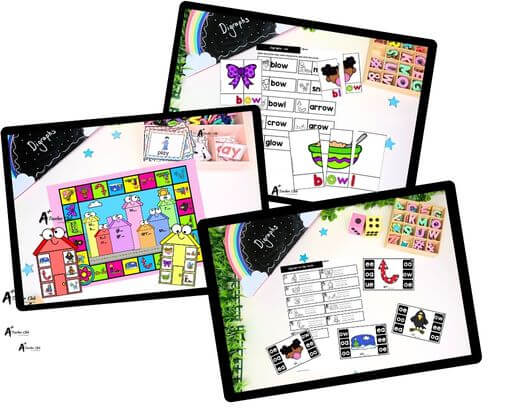
ow digraph
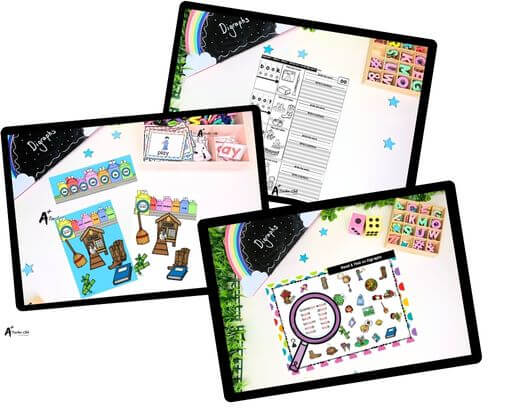
oo digraph
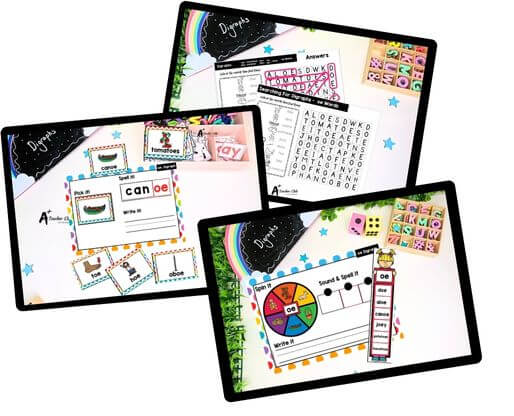
oe digraph

oa digraph
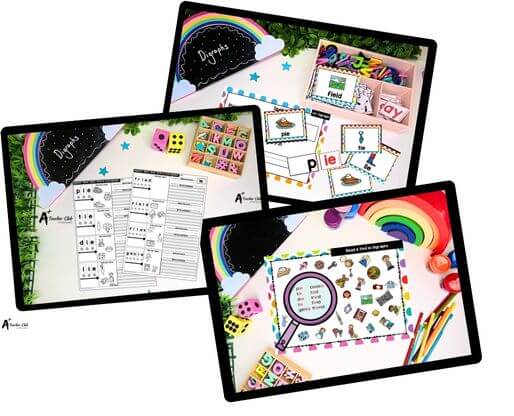
ie digraph
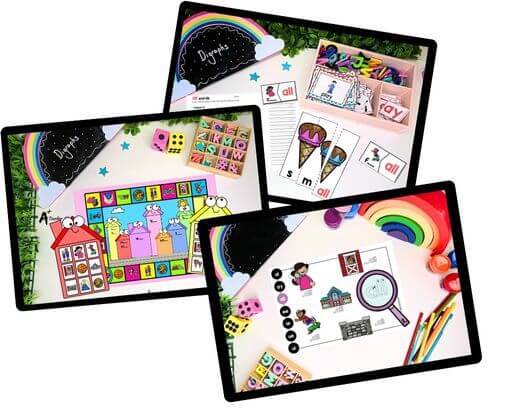
all digraph
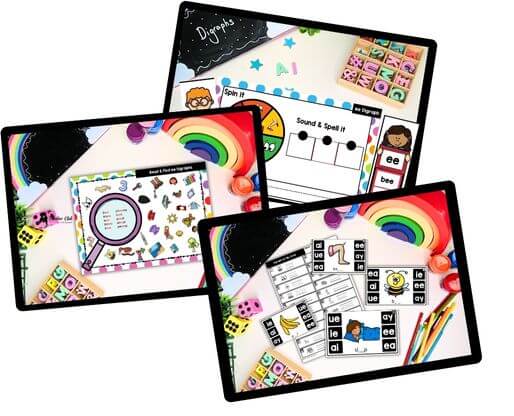
ee digraph

Browse Our Digraph Activities Collection

Digi Vowel Digraph Games
Can't find what you're looking for?
Send us a request! Use this form to request a resource. Please give details of the learning area, topic, year level, curriculum links. We’ll be happy to take a look to see if we can fit it in. Unfortunately a request does not guarantee we will be able to make it!
"*" indicates required fields

